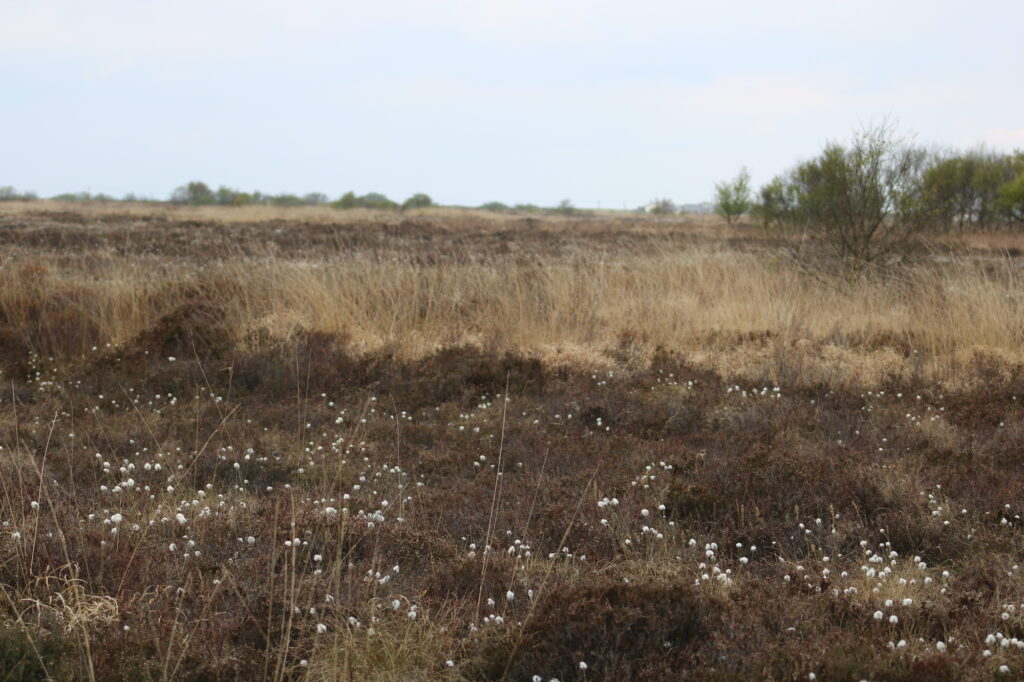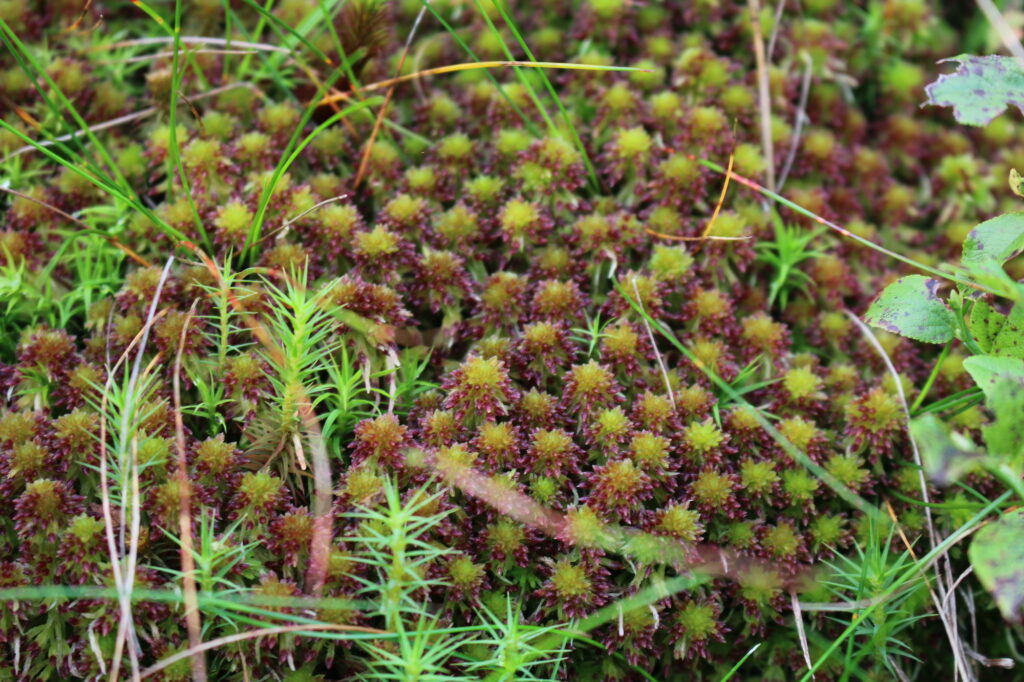Recently there’s been increasing media attention on peat, how it’s used in growing plants, and its effect on the environment. There’s often some misunderstanding about what exactly peat is and where it comes from, and lots of people don’t realise how much it’s used or what the implications are. This article should clear some things up!
Peat bogs
To understand the meaning and significance of Sphagnum moss and peat, we first need to understand an important and unique ecosystem – peat bogs.

A peat bog itself generally looks flat and barren, with only low-growing plants like heather and cotton grass. It’s always wet and muddy underfoot – and usually difficult or impossible to actually walk on the surface. But despite their seemingly bare appearance, peat bogs are the home of many specialised and rare species, including birds, reptiles, insects, vascular plants, and Sphagnum.
Sphagnum is a genus of plants in the division Bryophyta (mosses). Mosses are non-vascular plants, which means they don’t have roots or any specialised system for transporting water throughout the plant from underground – instead their leaves need to be constantly wet in order to photosynthesise and grow. Sphagnum mosses have developed a dramatic ability to store huge quantities of water in their leaf cells, as an alternative to pulling water from deep in the soil. This gives Sphagnum the ability to engineer the environment it grows in, and makes it a keystone genus for the peat bog ecosystem.

As the Sphagnum grows upwards, it raises the water level by capturing and storing rainfall – not just in the cells of individual plants, but in between the stems which grow together in matted mounds. Because the moss only needs light and water to grow, it doesn’t need to have roots anchored in soil. When the lower levels of moss become shaded out, they die, but the upper surface just keeps growing.
The dead lower levels of moss stay constantly waterlogged thanks to the water-holding action of the live moss on top. This prevents typical aerobic decomposition (the way most dead plants would decay into compost). Instead the dead moss slowly compresses and partially decays. Over thousands of years it eventually forms into a unique material called peat.
Uses in horticulture
There are two different peat bog-derived materials that are sometimes used in horticulture. Just to help with the confusion, they are both sometimes referred to as “peat moss”.
Sphagnum moss is the dried stems of Sphagnum species. This material looks like a tangle of soft, light-brown strands. It absorbs large quantities of water and compresses very easily. Sphagnum moss is used as a substrate for some specialised plants like orchids and carnivores, as well as a top-dressing for other plants and to line hanging baskets.
Peat is the partially-decayed remains of dead Sphagum. It’s dark brown and fluffy with no apparent structure – at a glance, it pretty much looks like compost. It can absorb and hold onto a lot of water while also retaining air pockets, which is an ideal combination to keep the roots of potted plants happy. Peat is the primary ingredient in most potting soils, for home gardeners and commercial growers alike.
Environmental considerations
Sphagnum moss can be cultivated sustainably. It grows just like any plant, so under the right conditions it can be farmed and harvested at the rate it’s produced. It can also be harvested from the wild, in ways which damage or destroy the bogs it naturally grows in. So it’s important to be aware of the origins of any Sphagnum you use, to make sure you are supporting sustainable sources.
Peat is a non-renewable resource, similar to oil or coal. It takes thousands of years to generate, and so it can’t be farmed or grown sustainably. The only way to harvest peat is to drain and dig up wild bog ecosystems and mine out the naturally-produced peat underneath. This means destroying the habitat of many rare and specialised species, as well as losing an important natural carbon sink.
Alternatives
There are many viable alternatives to peat in potting soil. Coir is a light spongy material with a texture very much like peat, made from the husks of coconuts. It’s a renewable resource and it’s generated as the byproduct of other industries. It’s lightweight, holds lots of water, and is roughly pH neutral – that makes it even better than peat, which has to have lime added to neutralise its very acidic pH!
Other peat-free mixes use composted pine bark in place of peat. This is also renewable, and tends to be a little cheaper than coir. It has slightly less water-holding capacity and can compact and break down more quickly. It’s great for fairly short-term use, like growing bedding plants or seedlings before they are transplanted into the garden.
It’s not always easy to find peat-free potting soils. Unless something is explicitly labelled as peat-free, it almost certainly isn’t. It’s even harder to find peat-free plant nurseries. Again, unless a grower specifically says their plants aren’t grown in peat, you can assume they definitely are.
The industry is changing – slowly. To help drive that change, we can prioritise buying from peat-free growers and using peat-free soils. We can ask growers to reduce or stop their use of peat, and ask suppliers to stock peat-free soil. And we can campaign for government regulations to prevent the harvest and sale of peat to begin with. Plants can and should be produced sustainably in harmony with the environment, and peat needs absolutely no place in the industry.
Found this article useful?
If you want more great resources like this, you can help me keep making them with a regular payment on Patreon.
